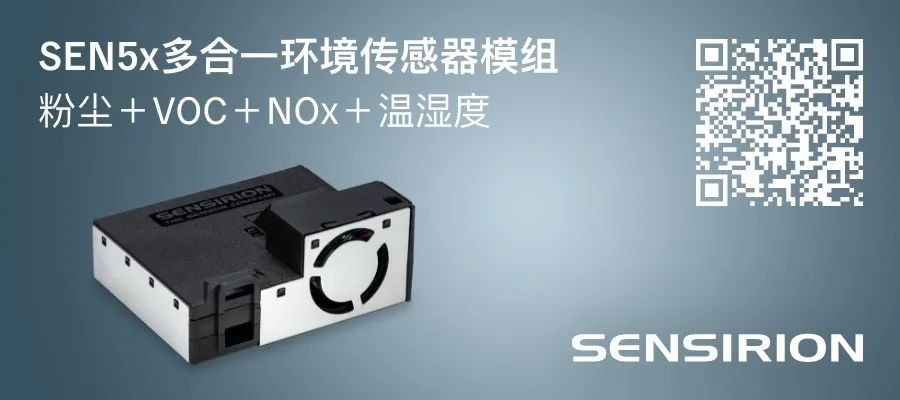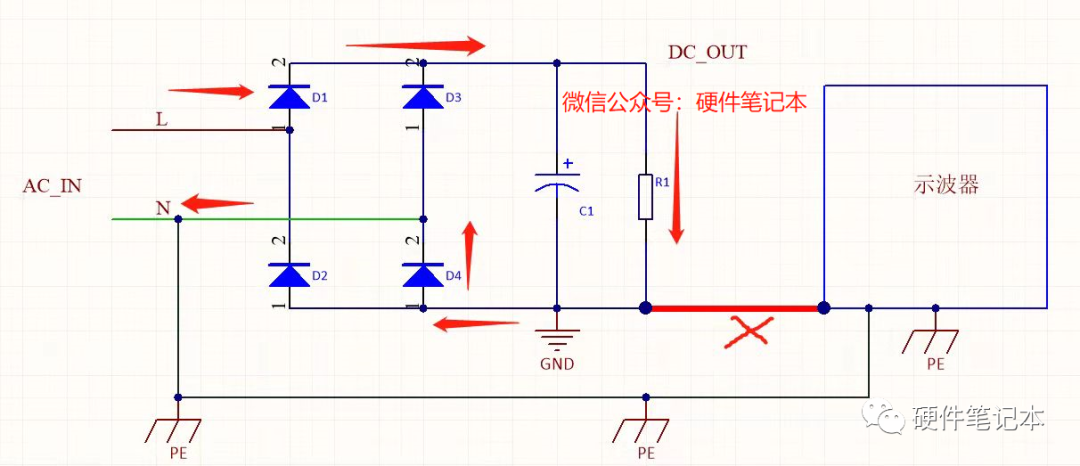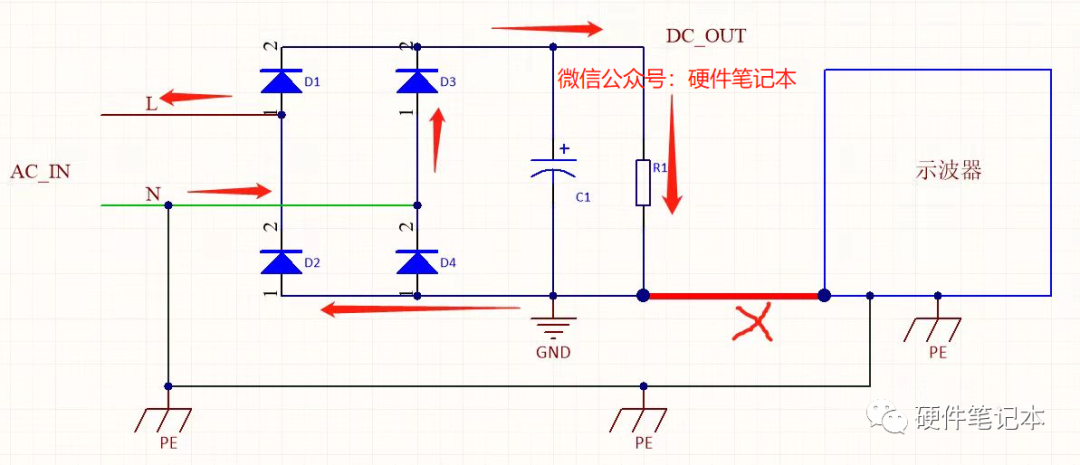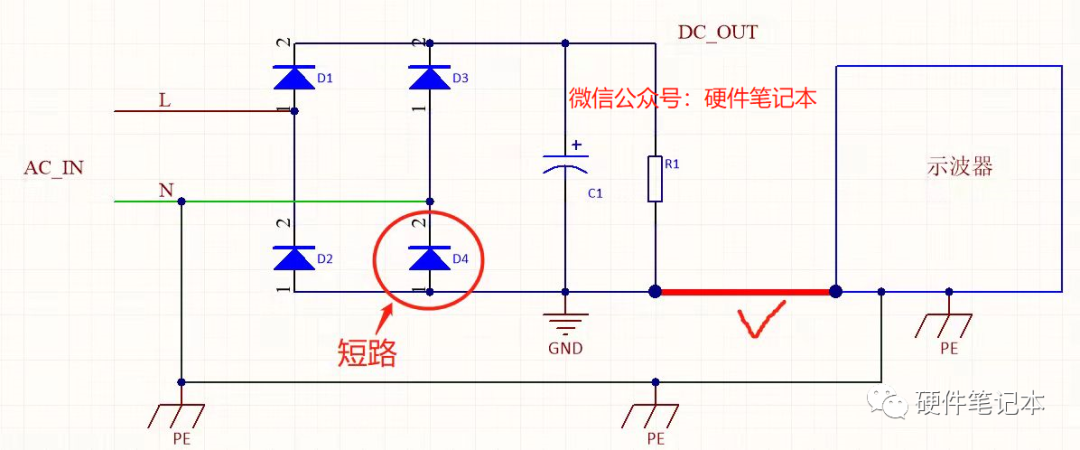
Recently, a colleague at the company asked me: “Can an oscilloscope be directly connected to the 220V voltage between the live wire and the neutral wire? Will it blow up?” Because it indeed exploded once before, it left a lingering fear~
I believe many of you have similar questions, so today I will summarize this knowledge and share it with everyone.
First, we need to know two common facts:
1. Ordinary oscilloscopes are not isolated from the mains. The power supply grounding wire, the ground clip on the oscilloscope probe, and the metal end of the oscilloscope case are all grounded together, or can be said to be interconnected.
2. Generally, the neutral wire (N) of the power supply input is connected to the protective earth (PE). Measuring with a multimeter, usually a few volts is normal and can be ignored.
Under normal circumstances, we convert AC 220V to DC voltage through rectification, and then further convert it into commonly used DC voltages such as 12V, 5V, and 3.3V through other power topologies.
Without connecting the oscilloscope, the positive half cycle of the AC input is L→D1→……→D4→N.
 ▲ Normal situation, positive half cycle of AC signal
▲ Normal situation, positive half cycle of AC signal
Without connecting the oscilloscope, the negative half cycle of the AC input is N→D3→……→D2→L.
▲ Normal situation, negative half cycle of AC signal
After connecting the oscilloscope, as shown in the figure below,if the ground wire of the oscilloscope is connected to the neutral wire, then the rectifier bridge’s D4 will be short-circuited.
At the positive input terminal of the power supply L→D1→PE, the impedance of this path will be very small, causing a large current, leading to D1 breakdown, which will cause the oscilloscope to blow up.
▲ Oscilloscope ground clip on neutral wire N
If the ground wire of the oscilloscope is connected to the live wire L, it is equivalent to directly connecting live wire L to protective earth PE, which will directly cause a short circuit and may even burn out the oscilloscope.
▲ Oscilloscope ground clip on live wire L
Having seen this, I believe everyone should understand what is going on.
Have you ever had this experience:Sometimes, we need to test with two or more probes simultaneously,where one probe is used to test the voltage between live wire L and neutral wire N, and the other probe is used to test our chip or some 5V DC voltage.If we are not careful, we might directly fry the chip, and the reason is the common ground issue of the oscilloscope, where high voltage enters the chip, leading to a blow up.
So, how can we directly measure 220V voltage? There are three methods:
First, cut off the grounding wire in the three-prong plug of the oscilloscope power line, and then test directly.This artificially disconnects the oscilloscope’s power ground wire, butit is important to note that if your ground clip is directly on the live wire, then the metal end of your oscilloscope case will be live at 220V, posing a safety hazard.Currently, most companies choose this method.
Second, use an isolation transformer,to isolate the device being tested.This way, you don’t need to cut the ground wire, and you can achieve the goal of breaking the test loop. However, this method belongs to “floating ground” testing, which also poses safety risks, soit is not recommended.
Third,use a high-voltage differential probe to measure mains voltage.It does not matter which way the live wireand neutral wire test points are connected, the probe internally isolates the measurement end’s ground from the oscilloscope’s ground through high resistance, preventing short circuit issues. This is the best recommended method, safe and convenient.
Although this is the safest method, high-voltage differential probes are relatively expensive, generally costing several thousand yuan, so only large companies can afford to buy them.
Source: Hardware Notebook
Copyright belongs to the original author, please contact for deletion if there is infringement.

 ▲ Normal situation, positive half cycle of AC signal
▲ Normal situation, positive half cycle of AC signal

